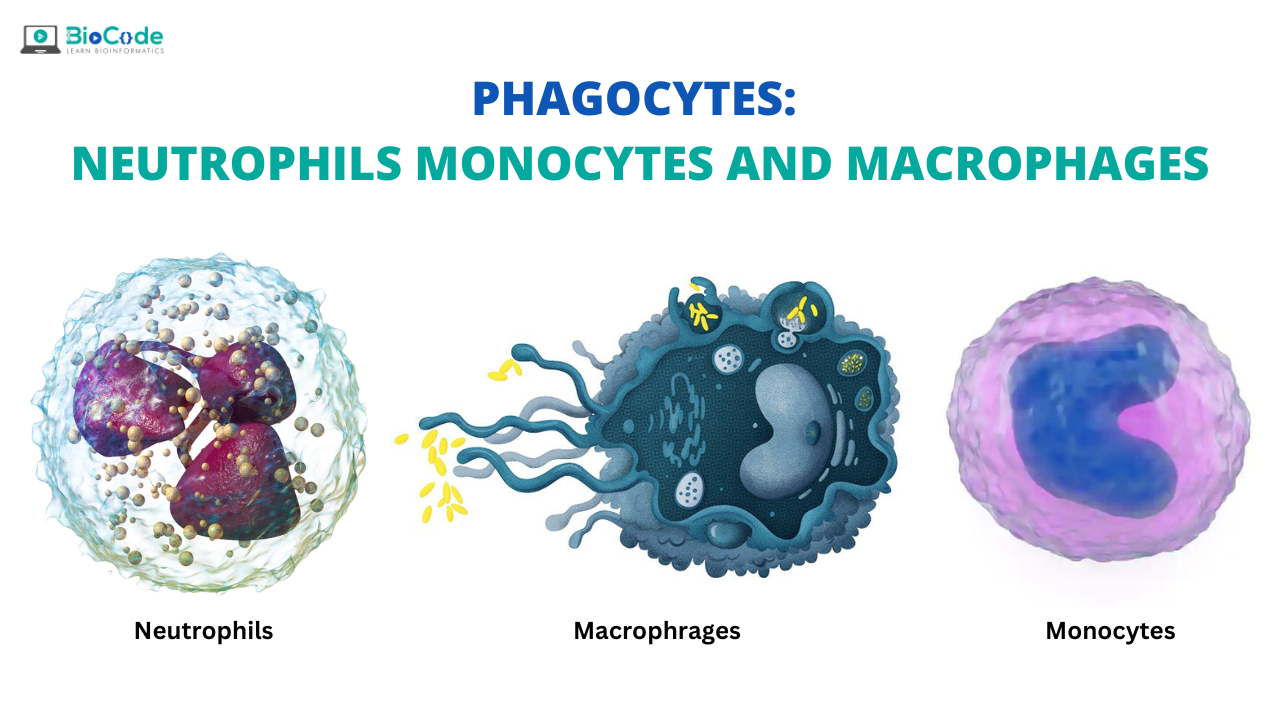Phagocytes
Phagocytes are immune cells that play a critical role in both the early and late stages of immune responses. Their main role is to circulate and migrate through tissues to ingest and destroy both microbes and cellular debris. There are three main groups of phagocytes: monocytes and macrophages, granulocytes, and dendritic cells, all of which have a slightly different function in the body..
Neutrophils
The two types of circulating phagocytes, neutrophils and monocytes, are blood cells that are recruited to sites of infection. They recognize and ingest microbes for intracellular killing. Neutrophils, also called polymorphonuclear leukocytes (PMNs), are the most abundant leukocytes in the blood, numbering 4000 to 10,000 per µL. The production of neutrophils is stimulated by cytokines which are known as colony-stimulating factors (CSFs). They are secreted by many cell types in response to infections. Neutrophils are the first cell type to respond to most infections, particularly bacterial and fungal infections. Neutrophils ingest microbes in the circulation, and they rapidly enter extravascular tissues at sites of infection, where they also phagocytose and destroy microbes. Neutrophils express receptors for products of complement activation and for antibodies that coat microbes. Neutrophils live for only a few hours in tissues. They are the early responders.
Neutropenia And Leukocytosis
Neutropenia
Neutropenia is a condition in which the number of neutrophils in the bloodstream is decreased which affects the body’s ability to fight off infections. Symptoms of neutropenia are fever, skin abscesses, mouth sores, swollen gum, and skin infections.
Leukocytosis
The number of circulating neutrophils increases significantly due to infections, and more are recruited to tissues, partially in response to cues the bone marrow receives to produce and release more myeloid cells. The resulting transient increase in the number of circulating neutrophils, called leukocytosis, is used medically as an indication of infection.
Monocytes
They also ingest microbes in the blood and in tissues. During inflammatory reactions, monocytes enter extravascular tissues and differentiate into cells called macrophages. Unlike neutrophils, they survive in these sites for long periods. Blood monocytes and tissue macrophages are two stages of the same cell lineage (mono nuclear phagocyte system). Macrophages are also found in all connective tissues and organs of the body.
Macrophages
Macrophages serve several important roles in host defense: they produce cytokines that induce and regulate inflammation. They ingest and destroy microbes, and they clear dead tissues and initiate the process of tissue repair. Pattern recognition receptors, including TLRs and NLRs, recognize products of microbes and damaged cells and activate the macrophages. Phagocytosis is mediated by cell surface receptors, Some of these phagocytic receptors activate the microbial killing functions of macrophages.
Macrophage Activation
Macrophages may be activated by two different pathways.
⦁ Classical macrophage activation
⦁ Alternative macrophage activation
Classical macrophage activation:
It is induced by innate immune signals, such as from TLRs, and by the cytokine IFN-γ, which may be produced in both innate and adaptive immune responses. Classically activated macrophages, also called M1, are involved in destroying microbes and in triggering inflammation.
Alternative macrophage activation:
It occurs in the absence of strong TLR signals and is induced by the cytokines IL-4 and IL-13; these macrophages, called M2, appear to be more important for tissue repair and to terminate inflammation.

